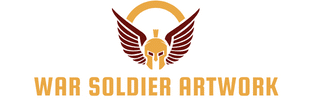Does Engaging with Interactive E-Books Enhance Learning in Children with Dyslexia?

Dyslexia, a common learning difficulty that affects the ability to read and write, can pose significant challenges to children’s education. However, as technology continues to evolve, new tools and aids are emerging that could potentially transform the learning experience for students with dyslexia. One such tool seems to be interactive e-books, but does engaging with these really enhance learning? This article explores this question in detail, discussing the benefits and potential downsides of using interactive e-books as a learning aid for dyslexic students.
How Dyslexia Affects Reading Skills
Understanding how dyslexia affects reading skills is the first step in figuring out how to best support these students. Dyslexia is a language-based learning disability that affects an individual’s ability to read. This condition does not affect overall intelligence, but it can make reading text, a crucial skill in the academic world, extremely challenging.
Avez-vous vu cela : What Strategies Aid in Reducing Digital Eye Strain for Remote Workers?
Dyslexic students tend to struggle with decoding words, meaning they may have difficulty breaking down words into their individual sounds and blending these sounds together to read words. This difficulty can lead to issues with reading fluency, comprehension, spelling, and writing. Furthermore, students with dyslexia may require additional time to process and understand information read, which can affect their ability to keep up with the pace of a traditional classroom setting.
The Role of Technology In Supporting Dyslexic Readers
Technology has been making significant strides in the field of education, and its integration with learning for dyslexic students is no exception. Various tools and apps, like Google’s G Suite for Education, have features designed to support dyslexic readers. These tools offer reading aids such as text-to-speech, speech-to-text, predictive typing, and other features designed to assist with reading and writing tasks.
A lire également : Choosing the best massage geneva options for ultimate relaxation
Interactive e-books are a type of technology that can support dyslexic students. Unlike traditional books, these digital versions can include multimedia elements such as images, sounds, and videos, making the reading experience more engaging and multi-sensory. The text can be manipulated to suit the reader’s needs, such as changing the font size, style, or color, which can help reduce visual stress often associated with dyslexia.
Benefits of Interactive E-Books for Dyslexic Children
Interactive e-books can offer several benefits for children with dyslexia. These digital books can capture and hold the attention of children, making reading a more enjoyable activity rather than a daunting task.
The interactive elements of these books can cater to different learning styles, catering to both visual and auditory learners. For example, a student who struggles with reading text might benefit from an audio narration of the story, which can also improve their listening skills.
The ability to customize text can also be highly beneficial. By adjusting the font, size, color, and spacing, students can create a reading environment that is tailored to their needs, reducing visual stress and enhancing their reading experience.
Furthermore, the interactive nature of these e-books can provide immediate feedback, helping children identify and correct mistakes, thereby reinforcing learning.
Potential Downsides of Using Interactive E-Books
Despite their potential benefits, it’s important to be aware of some potential downsides to using interactive e-books. One challenge could be ensuring that the technology is accessible to all students. Not every student has access to the devices needed to read interactive e-books, which could create a digital divide in the classroom.
Another potential issue is distraction. While interactive elements can enhance learning, they can also distract from the text if not used appropriately. The key is to ensure that the interactivity of the e-book serves to reinforce the content and not divert attention away from it.
Finally, it’s worth noting that while interactive e-books may provide a supportive tool for dyslexic readers, they should not replace traditional reading instruction. The skills developed through traditional reading methods are crucial and should be complemented, not replaced, by technology.
A Balanced Approach
In conclusion, interactive e-books can offer a valuable tool to enhance the learning experience for children with dyslexia, but they should be used as part of a balanced approach to reading instruction. These digital resources can make reading more accessible and engaging for dyslexic students and cater to their individual learning needs. However, it’s important to ensure that these tools are used in conjunction with traditional reading instruction methods, and that the technology itself does not become a distraction. With careful implementation, interactive e-books can help dyslexic students overcome their reading challenges and succeed in their learning journey.
Integrating Interactive E-Books into Special Education
When considering a supportive learning environment for students with dyslexia, technology like interactive e-books can offer a sea change. Special education teachers have started to introduce these e-books into their teaching techniques to provide a more personalized and engaging learning experience.
First, let’s understand what an interactive e-book is. An e-book is a digital format of a book, while an interactive e-book goes a step further by incorporating various interactive elements like animations, links, quizzes, and more. This interactive format can offer a more immersive and engaging learning experience, particularly beneficial for dyslexic readers who often struggle with traditional text-based learning.
These e-books can be tailor-made to suit each student’s specific needs. For instance, dyslexic students often find black text on a white background challenging to read. Interactive e-books allow for customization of text color, background color, font type, and size. This can make the reading experience more comfortable, reducing the visual stress associated with reading difficulties.
Another key feature of interactive e-books is their capacity to incorporate text-to-speech technology. This allows the e-book to read aloud the text, helping students who struggle with phonological processing to better understand the content.
However, to ensure that these e-books provide an inclusive learning environment, teachers need to consider their accessibility. Not every student has an electronic device, and even those with devices might not have the necessary technical skills. Schools must strive to provide these resources to all students to prevent a digital divide.
Conclusion: Interactive E-Books as a Learning Enhancement Tool
In the context of special education for children with dyslexia, it’s clear that interactive e-books can serve as a powerful tool. They can make the reading comprehension process easier and more enjoyable, thus helping to level the learning field for students with reading difficulties.
By allowing customization of the text, supplementing reading with audio, and integrating engaging interactive elements, these e-books can significantly enhance the learning experience for dyslexic students. However, they should not act as a complete replacement for traditional reading instruction methods. Instead, they should be seen as a complementary tool to be used alongside traditional teaching methods.
While the benefits of interactive e-books are substantial, we must address the potential challenges of accessibility and distraction. It’s crucial that we ensure all students have access to suitable devices and the necessary training to use them effectively. Furthermore, the interactive elements within the e-books must be designed to enhance, not distract from, the learning content.
Our goal should be to create an inclusive, engaging, and effective learning environment for all students, including those with dyslexia. With careful planning and implementation, interactive e-books can play a significant role in achieving this goal. Eventually, as we continue to innovate and leverage technology, we can look forward to a future where learning disabilities like dyslexia no longer pose as substantial a barrier to education as they do today.
